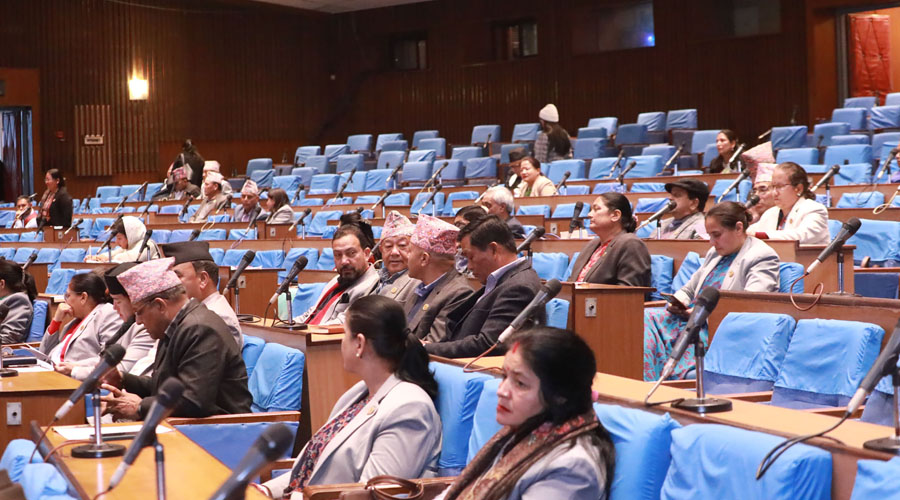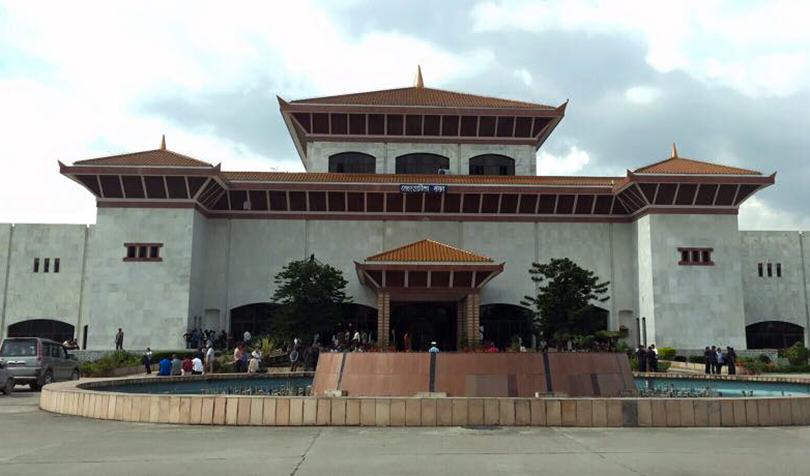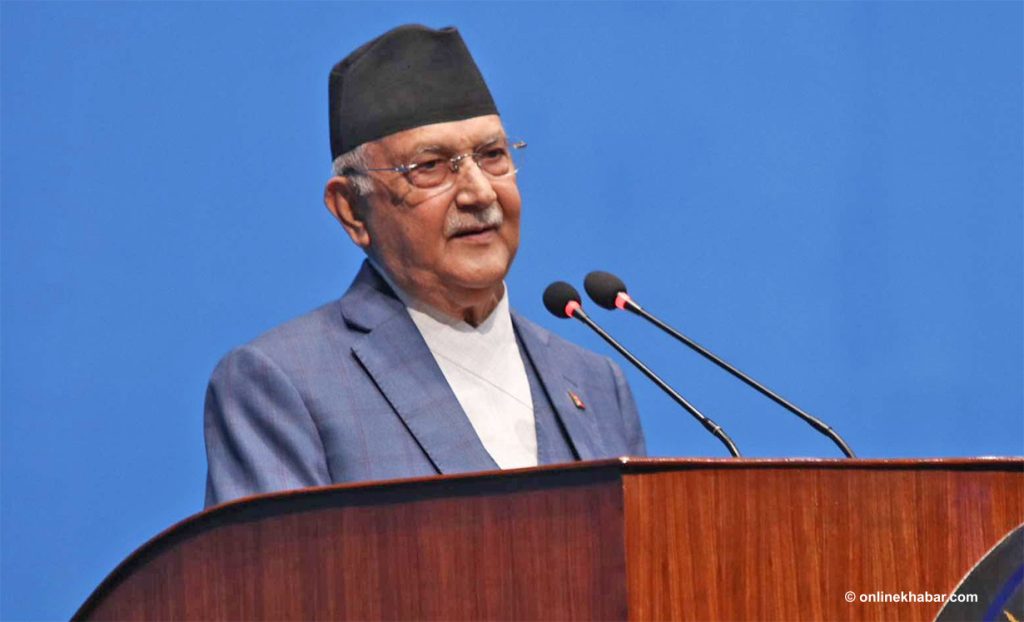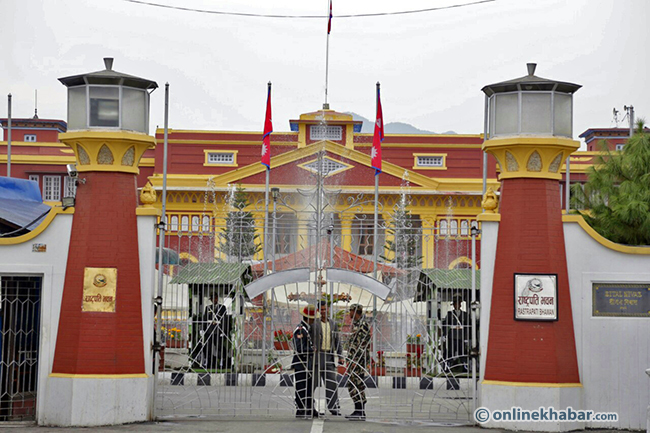
In 2022, Nepal concluded local, provincial and federal elections. The public actively participated in all three elections that witnessed various interesting events ranging from the rise of independent candidates. Now is the time for Nepal presidential election, scheduled for March 9.
This means the second tenure of President Bidya Devi Bhandari is about to end, and Nepal is going to get a new head of state. According to Nepal’s constitution, a person who has already been elected twice as the president shall not be eligible to be a candidate again.
The procedure of the Nepal presidential election is quite complex as it is different from the elections in general. So, you might get in trouble understanding the process. But, don’t worry–we have got you covered.
1. The voters
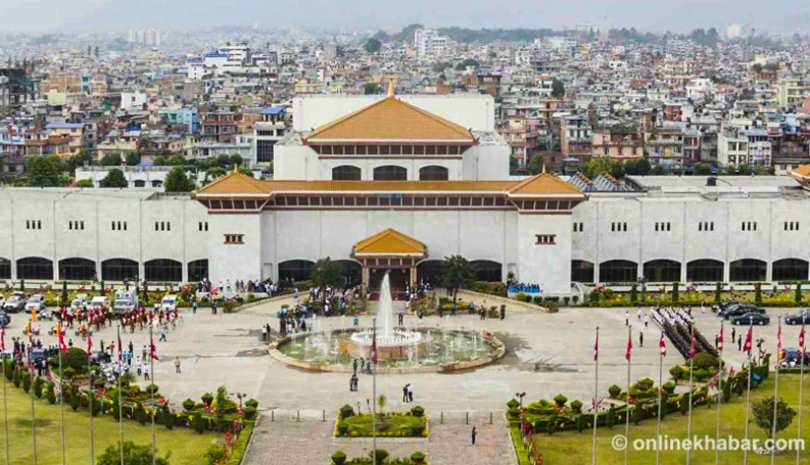
This is the first thing why the Nepal presidential election is different from the rest of the elections that happen in Nepal. The general public is not allowed to cast their votes for the president. Instead, the electoral college includes all members of the House of Representatives and the National Assembly of the federal parliament and members of all seven provincial parliaments, as per article 62 of the constitution.
Accordingly, there will be a total of 884 members including 275 members of the House of Representatives (Lower House), 59 members of the National Assembly (Upper House) and 550 members of seven provincial assemblies.
2. The mathematics
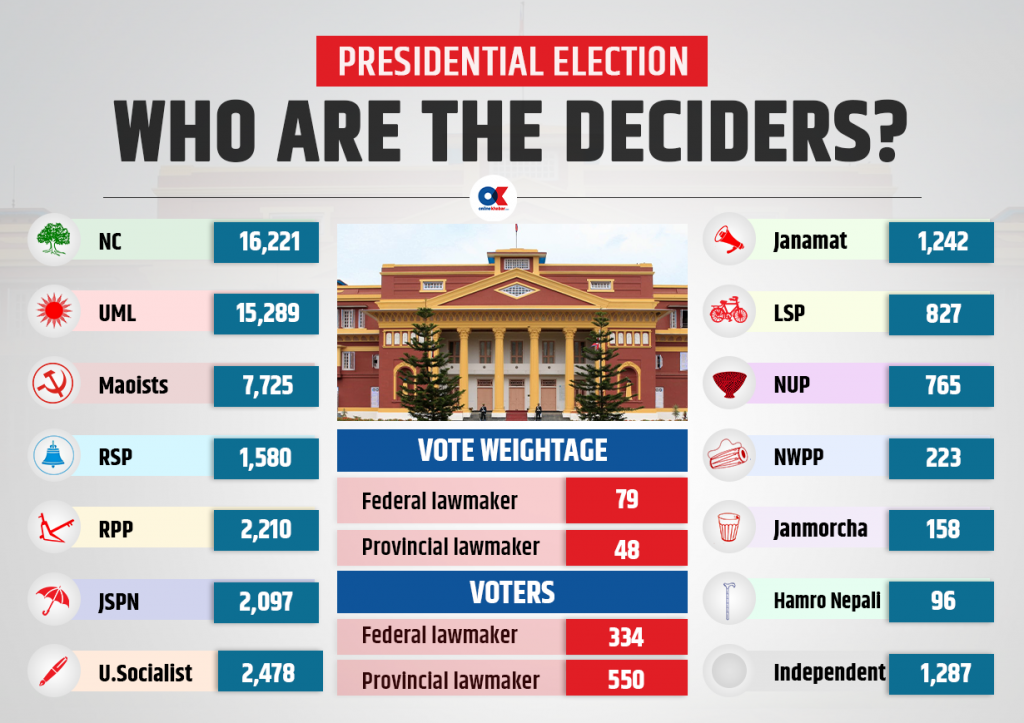
Counting votes by the electoral college members is perhaps the most intriguing part of the Nepal presidential election because the members have different weights assigned to their votes.
A vote cast by a member of the federal parliament, including both upper and lower houses, will be considered to have a weight of 79 votes whereas a vote cast by a member of a provincial assembly will be considered to have a weight of 48 votes.
It means, there will be a total of 52,786 electoral votes in the electoral college.
The weight of the vote has been decided according to the ratio of lawmakers to the total population of the country as calculated in the 2011 census as the final report of the latest 2021 population census is not yet out.
A person who secures more than 50 per cent of the total votes in the voting of the Nepal presidential election shall be elected as the president.
3. The provision of revoting
In case none of the candidates secures more than 50 per cent of the total votes, there will be revoting between the top two candidates to conclude the Nepal presidential election.
If the candidate cannot secure over 50 per cent of votes in the second round, the voting will step into the third round. In the third round, the candidate securing the highest number of valid votes will be elected as the president.
4. The trouble of the tie
According to the Act on Presidential and Vice Presidential Elections, in case two candidates secure equal vote weights, the Nepal presidential election will be concluded through the lucky draw (drawing of lots).
5. Key dates
The Election Commission has published a calendar for the Nepal presidential election, according to which the key election activities will take place on the following dates:
| SN | Activity | Date |
| 1 | Publication of the voter list | February 22 |
| 2 | Complaints and protests about the voter list followed by investigations | February 23-24 |
| 3 | Final voter list publication | February 24 |
| 4 | Registration of the nominations | February 25 |
| 5 | Complaints and protests against the candidates followed by investigations | February 26-27 |
| 6 | Withdrawal of the candidacy | February 28 |
| 7 | Final candidate list publication | February 28 |
| 8 | Election campaign | March 1-8 |
| 9 | Voting | March 9 |
| 10 | Declaration of the results | March 9 |
6. Qualification of the candidates
No parties have yet decided the name of the candidates for the presidential election. The parties are still discussing on it. However, to select the candidates for the Nepal presidential election, there are few criteria that the political parties have to follow.
Firstly, the candidate should hold Nepali citizenship based on descent. Secondly, the candidate should be over 45 years old. The candidate’s name also should be registered in the latest electoral roll of the rural municipality or municipality.
Similarly, the candidate should not be ineligible by any law and s/he should not hold any position of profit.
Lastly, the presidential candidate must have 25 members of the electoral college as proposers and 25 others as seconders to file nominations.





